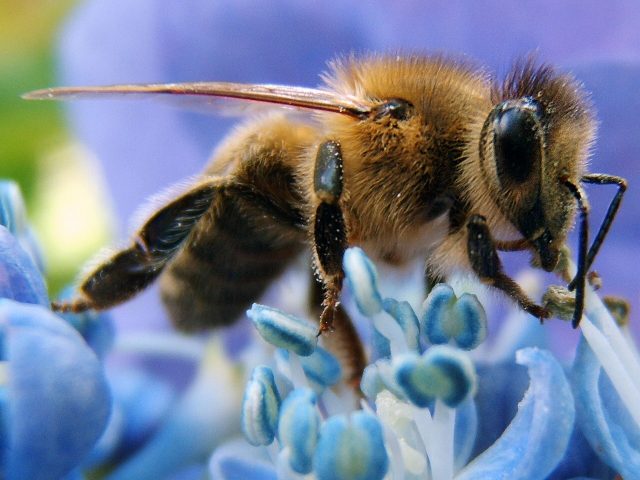Sensory competition (1): A clash of odors
For any animal, the real world is an ever-changing environment. Continuously, even then they are just remaining in a peaceful, awake state, animals receive multiple sensory signals encoding different features of their surroundings, or even carrying information about their own internal state (orientation, body movement, or internal temperature, for example). Some of these signals might be of major importance for survival, while some others do not provide any meaningful information at the moment and could –and should, for the sake of energy saving– be ignored by the animal.
While swimming across this sea of sensory information, the brain needs a way to optimize its resources and carefully select the most relevant pieces of information for the animal’s survival. This is especially important if there are two or more competing signals arriving to the sensory circuits. When two different and competing stimuli are arriving from different senses, researchers have identified a handful of interesting perceptual effects, such as the well-known McGurk effect, in which stimuli coming from visual and auditory senses compete to generate a coherent perception, and the winner of such a competition (the visual stimulus) induces a strong bias in the perception from the other (auditory). This is a very illustrative explanatory video of the effect:
Competition of sensory stimuli can also occur within a given sense. For instance, this occurs when we are crossing the street and we hear the sound of a dangerously fast car approaching. The signal relevant for survival (the sound of a fast car approaching) has to compete with other pre-existing auditory signals (like the sound of people talking, or more distant traffic), and the brain is generally able to discriminate one from the other and pay attention to the most relevant one at the moment. The task of discriminating different signals (say, sounds) is commonly referred to as the cocktail party effect 1, pointing to the idea that the responsible mechanism would allow you to follow a normal conversation in a cocktail party event, full with other coexisting sources of sound (background music, other people talking,…).
However, very little is known about how the brain is able to handle multiple sources of information, and even more, how it is able to prioritize signals relevant for survival. In a series of posts, I will discuss some recent advances in such a type of sensory competition. I focus here on an example of sensory competition found in a very powerful sensory system: the olfactory system of the honey bee.

Very recently, researchers have found a possible mechanism which explains the response of honey bees when they are exposed to two co-existing odors, after a previous exposure to one of the odors 2. In particular, the researchers used calcium imaging to investigate the response properties of projection neurons in the antennal lobe, a part of the honey bee brain which would be equivalent to the olfactory bulb in mammals. They observed that the response of these neurons to a given pure odor “A” was the same regardless of the animal being previously exposed to the odor or not. However, when presented with a mixture of odors, they found a very different result: when the animal was previously exposed to a pure odor “A”, and after a certain time presented with a mixture of two pure odors “A” and “X”, neurons in the antennal lobe were more receptive to the “X” component (that is, the response to the mixture signal is close to how the neurons would respond to a pure “X” odor). Further experimental tests, including both calcium imaging and electroantennograms, showed that these findings were not a consequence of adaptation in the sensory receptors of the antennae, but were a direct reflect of a competition between neurons representing each pure odor signal in the neural networks of the antennal lobe. Behavioral tests in honey bees were also performed to further test these findings.
Researchers also built a detailed computational model of the neural circuits in the antennal lobe to evaluate the most plausible origins of this behavior. Once the parameters of neurons and synapses in the model had been adjusted to closely reproduce the response to pure odors, different synaptic plasticity rules were introduced in several types of synaptic connections in the model, to observe the effect that these rules would have in the real system. They found that plasticity of synapses going from inhibitory interneurons to projection neurons most reliably produced the observed shift in the response to the mixture.

These results suggest that this kind of synaptic plasticity is the origin of the sensory competition found in the honey bee antennal lobe, and that the whole mechanism can prevent an unimportant, persistent odor to overshadow a novel odor relevant for survival (such as an odor associated with food or a predator). The findings are important to better understand the dynamics of olfactory circuits in insects, which are among the most sensible sensory systems found in nature.
References
- S. Haykin and Z. Chen, The cocktail party problem. Neural Computation, 17, 1875-1902, 2005 ↩
- Locatelli F.F., Fernandez P.C., Villareal F., Muezzinoglu K., Huerta R., Galizia C.G. & Smith B.H. (2013). Nonassociative plasticity alters competitive interactions among mixture components in early olfactory processing, European Journal of Neuroscience, 37 (1) 63-79. DOI: 10.1111/ejn.12021 ↩
1 comment
[…] a previous post, I discussed the dynamics of signal competition in sensory systems, focusing on an interesting and […]